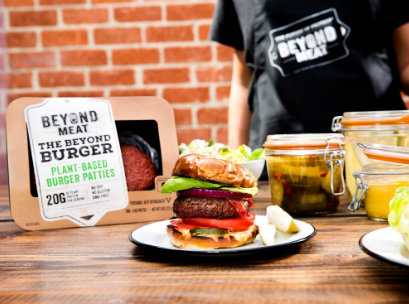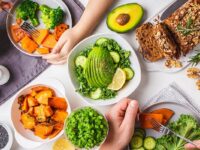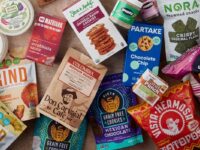 It’s that time of year when food and diet trends take a strong hold. New Year resolutions are kicking on with many consumers still riding high on their good intentions to start the year off with better eating habits.
It’s that time of year when food and diet trends take a strong hold. New Year resolutions are kicking on with many consumers still riding high on their good intentions to start the year off with better eating habits.
Leveraging the motivational mood of this time of year, January has become ‘Veganuary’ for thousands of people who have signed up to try a month long vegan diet.
Launched in 2014 by a charity group, Veganuary has grown from a starting reach of 3,300 people in the UK to more than 220,000 in 14 countries, including Australia, in 2019.
The growth in popularity of Veganuary is reflective of growing consumer interest in eating more plant-based meals. While the popularity of vegetarian eating has been steadily growing over recent years, interest in vegan eating, a more restrictive approach that, along with the avoidance of animal foods also removes foods made by animals, like eggs, milk and cheese from the diet, is more recent.
Between 2014 and 2016, Mintel’s Global New Product Database reported a 92 per cent rise in the number of products launched in Australia that carried a vegan claim. Research by Euromonitor predicts this growth to continue with the local market for packaged vegan foods expected to reach $215 million by 2020, up from $136 million in 2016.
The trend toward more plant-based meals is also being fuelled by part-time vegetarians – those who can’t quite give up eating meat, but are consciously swapping it out for more frequent vegetarian or vegan style meals. These part-time vegetarians, or ‘flexitarians’, are likely higher in number, with research from the US showing more than half of consumers say they fit this category.
Adding flexitarians to the 11 per cent of the population who identify as vegan or vegetarian, means demand for meat-free products is high, and it’s starting to affect retail sales of meat. Nielsen data found both young and older Australians bought less meat in 2018 than they did in 2017 indicating it could be tofu rather than steak that gets thrown on the barbie this Australia Day.
Vegan eating and Veganuary as a concept, are likely here to stay as this style of eating dovetails three areas of growing consumer concern. It encompasses the adoption of a plant-based eating pattern, a style of eating perceived as better for personal health and wellbeing. It also addresses rising consciousness about the impact of food choices on the health of the planet, and by avoiding all animal derived foods, it speaks to growing concerns about food production and animal welfare.
The strength of the trend means plant-based foods are likely to continue to provide significant business opportunities in the future. The market has already witnessed the rapid rise of plant-based alternatives to dairy milk, with a 250 per cent increase in sales of almond milk in the five year period between 2010-2015.

Meat is set to be next and it’s piqued the interest of investors. Tyson Foods, the largest meat processor in the US has invested significantly in Beyond Meat, a company that produces a 100 per cent plant-based burger that looks, tastes and appears to bleed like a real meat burger. The company’s position is that the future for meat will change and that getting into the alternative area early is a smart investment to make.
Richard Branson and Bill Gates agree, both having contributed to a $17 million investment in Memphis Meats, a company producing ‘meat’ from cell cultures. In 2019 and beyond, it’s likely that dairy and meat alternatives will no longer be the exclusive territory of those with dietary needs and what was formerly ‘alternative’ will become increasingly mainstream.
While vegan and vegetarian eating is not necessarily an eating pattern that everyone should adopt, demand for more meat-free meals and products is likely to stick in the long term. For food manufacturers and producers it represents both a threat and an opportunity.
For those with existing meat-free products, the opportunity exists to include packaging claims that highlight products that are suitable for vegans and vegetarians. These claims are most useful for consumers where there may be some doubt about whether a product contains animal-derived ingredients or not.
Innovation opportunities also exist for producing alternatives to animal derived foods, whether this is through the use of whole plant food ingredients such as nuts, seeds, legumes and vegetables, or through the use of plant based proteins such as soy or pea protein.
For those producing and marketing animal-derived foods (meat, chicken, eggs, dairy, fish, etc), now is the ideal time to fully understand the high nutritional contribution these products make to the diet, to draw on the culture and history of the products and their place in traditional eating cultures, to undertake initiatives that minimise or alter the environmental impact of food production and to review, fully understand and prepare to respond to queries around animal welfare.
The future for plant-based foods, and vegan and vegetarian products, looks strong and is an area that is likely high on the strategy agenda for many in the business of food.
Sharon Natoli, founder of Food & Nutrition Australia and author of Food for a Better Future.















